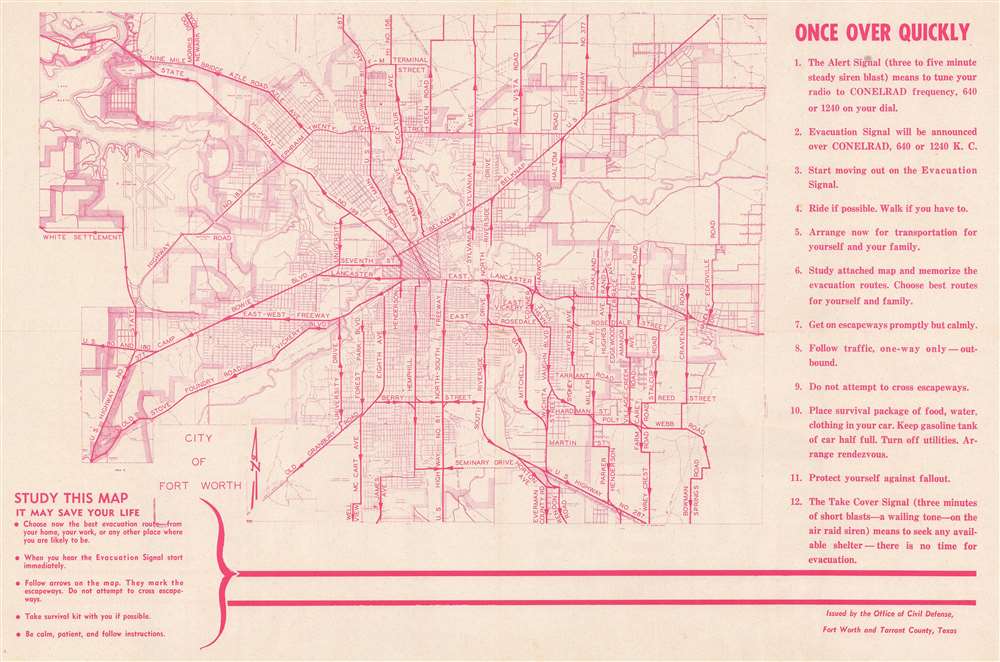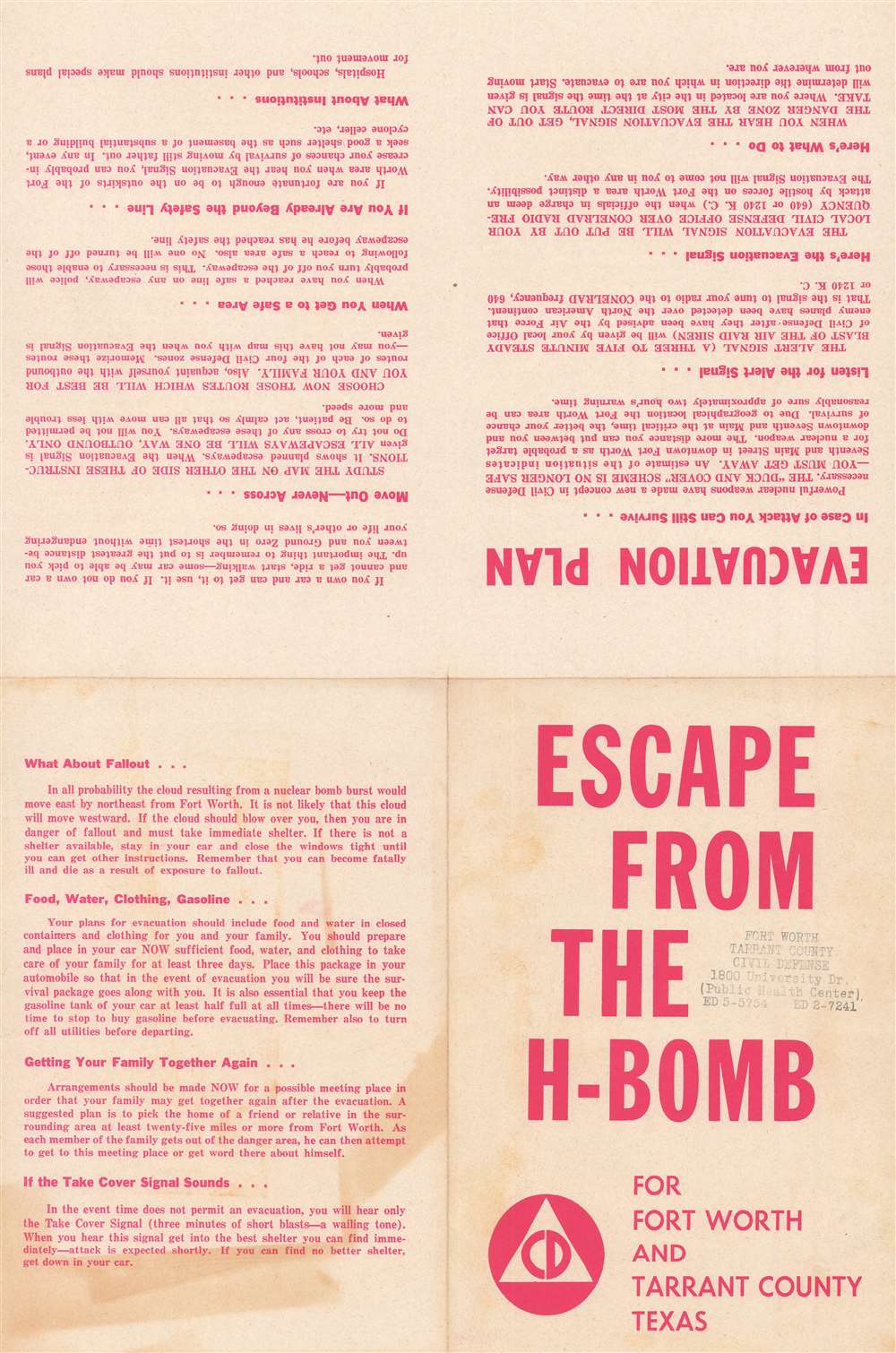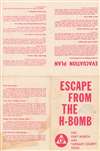1962 Office of Civil Defense Evacuation Map of Forth Worth, Texas
ForthWorthEvacMap-civildefense-1962$650.00

Title
Escape the H-Bomb for Forth Worth and Tarrant County Texas.
1962 (undated) 11.5 x 17.5 in (29.21 x 44.45 cm) 1 : 73920
1962 (undated) 11.5 x 17.5 in (29.21 x 44.45 cm) 1 : 73920
Description
Likely published around the time of the Cuban Missile Crisis, this is a c. 1962 Office of Civil Defense, Fort Worth and Tarrant County evacuation map of Fort Worth, Texas. Red arrows indicate major roads designated as evacuation routes, called 'escapeways,' meant to be one-way streets for funneling people away from downtown Fort Worth in the event of an impending hydrogen bomb attack. Twelve key steps appear along the right side and proclaim in short, easy to understand phrases how the evacuation would ideally proceed and the meaning of different signals, such as the 'Alert Signal' and the 'Take Cover Signal'.
Verso Content
Information on the verso provides a more detailed explanation of the evacuation plan. It also states, in capital letters, that 'the 'duck and cover' scheme is no longer safe – 'you must get away'. It continues,An estimate of the situation indicates that Seventh and Main Street in downtown Fort Worth as a probable target for a nuclear weapon. The more distance you can put between you and downtown Seventh and Main at this critical time, the better your chance of survival. Due to geographical location the Fort Worth area can be reasonably sure of approximately two hour's warning time.The verso text also addresses the question of nuclear fallout, stating, 'In all probability the cloud resulting from a nuclear burst would move east by northeast from Fort Worth'.
The Office of Civil Defense
The Office of Civil Defense (1961 - 1964) was a U.S. government agency that was part of the U.S. Department of Defense. Founded on August 1, 1961, the Office of Civil Defense replaced the Office of Civil and Defense Mobilization. The agency can trace its lineage back to May 1941 when President Franklin D. Roosevelt established an agency with responsibilities including planning medical care for civilians and community health programs in preparation for a possible military attack on the United States. In May 1962 the Office of Civil Defense was organized into eight administrative regions, which allowed the agency to better coordinate local training and resources, manage distribution of funds, and support planning and execution by state and local agencies.The Cuban Missile Crisis
The Cuban Missile Crisis lasted for thirteen days in October 1962, from the 16th through the 28th. A confrontation between the United States and the Soviet Union, this two-week span is considered the closest the two superpowers ever came to a full-scale nuclear war. The Crisis was ignited by Soviet ambitions to deploy ballistic missiles in Cuba, which were spurred by American deployments of Jupiter ballistic missiles in Italy and Turkey and the failed 1961 Bay of Pigs invasion. American President John F. Kennedy declared that the United States would not tolerate offensive weapons in Cuba and ordered a naval blockade of the island. Kennedy and Soviet Premier Nikita Khrushchev came to an agreement after several days of negotiations, whereby the Soviets agreed to remove all their offensive weapons in Cuba (to be verified by the United Nations) and the U.S. publicly declared that they would never again attempt an invasion of the island. In secret, the U.S. agreed to dismantle the Jupiter missiles in Turkey, and it is speculated that the missiles in Italy were also included in the agreement. The negotiations also resulted in the creation of the Moscow-Washington hotline.Publication History and Census
This map was created for and published by the Office of Civil Defense, Fort Worth and Tarrant County, Texas c. 1962. This is the only known cataloged example.Condition
Very good. Light wear along original fold lines. Text on verso.




